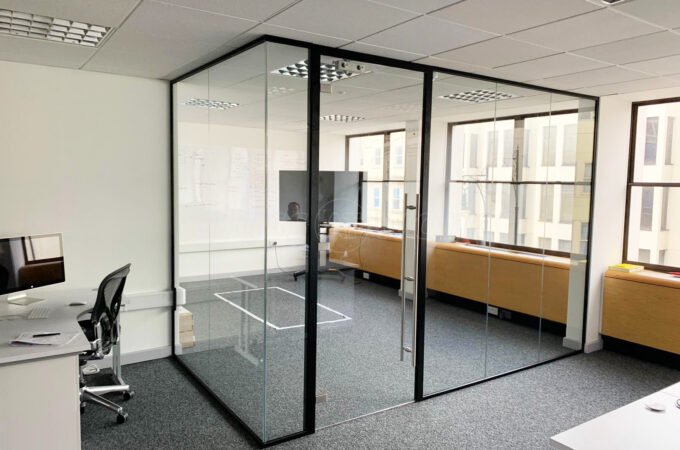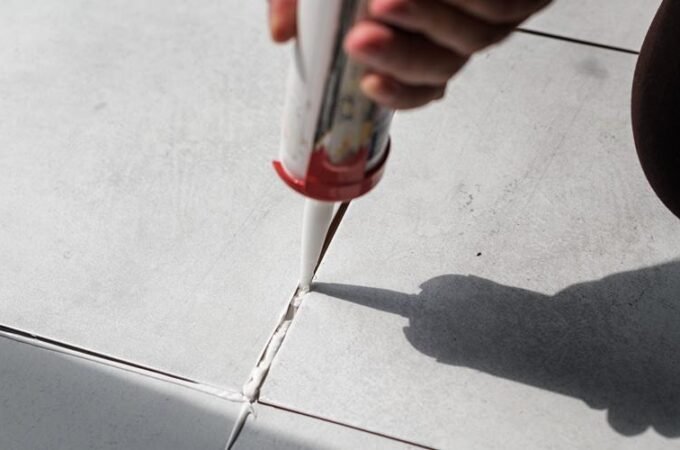
How Commercial Window Installation Impacts Energy Efficiency
Table of Contents
ToggleThe Changing Role of Commercial Windows in Today’s Offices
The modern office environment has experienced a dramatic transformation over the past decade, heavily influenced by advances in architectural materials and building design. Once windows were considered necessary but largely unremarkable, they now serve as integral parts of successful, high-performing workplaces. Natural light, outdoor access, and views contribute to employee wellness, aesthetics, and even the overall functionality of a workspace. Businesses today are turning to commercial window installation specialists to help navigate an expanding array of choices that can profoundly impact working conditions and a company’s environmental footprint.
Commercial windows no longer serve a single, static purpose. Instead, they’re central to interior design and the drive for energy savings and sustainable operation. For many companies, upgrading is about more than visual appeal. It’s a well-researched business strategy: daylight, for example, has been tied to improved cognitive performance and reduced absenteeism. According to the New York Times, companies are planning offices around optimal window placement, investing in features that blur the line between interior and exterior, and leveraging modern glazing systems to reduce utility bills while improving employee quality of life.
Key Factors When Choosing Commercial Window Solutions
Choosing the right windows for a commercial property presents a complex decision matrix, blending performance, design, and functionality. Among the most critical factors is energy performance. Different glass and frame technologies offer distinct advantages in controlling heat transfer, solar radiation, and air infiltration. Low-emissivity (Low-E) coatings on glass, for instance, reflect infrared heat while letting visible light pass through, helping reduce both heating and cooling costs.
Soundproofing is another primary consideration, especially in mixed-use developments or urban environments. Laminated or triple-pane windows can eliminate street noise, creating a quieter, more productive interior. Durability is also at the top of mind, since high-traffic locations or extreme climates call for frames and seals that resist warping, corrosion, and condensation over many years of use. The architectural style of a building should not be overlooked, as windows play a pivotal role in defining a workspace’s personality and professional image. The ideal solution balances budget, aesthetics, longevity, and efficiency without sacrificing performance.
Operational needs add further complexity. Does the space require open windows to support ventilation, or are fixed panes more practical for security and insulation? Should you incorporate innovative glass technologies for responsive shading and privacy? Consultation with experienced window professionals ensures you avoid costly mistakes, identifying products that address every facet of modern commercial needs.
How Modern Windows Boost Energy Efficiency
Windows are often a building’s weakest link in energy performance, which has driven enormous innovation within the construction industry. According to the U.S. Department of Energy, up to 30% of a building’s heating and cooling energy can be lost through poorly insulated or improperly installed windows. The latest commercial systems combat this loss through technology and design refinement.
Multi-pane windows, with air or inert gas (like argon or krypton) sandwiched between glass layers, create an insulating barrier that drastically reduces convective heat transfer. Low-E coatings act as thermal shields, reflecting unwanted solar radiation outward in the summer and trapping heat inside in winter. Thermally broken frames are engineered with a non-conductive material between the inner and outer sections to prevent energy leakage. Advanced weatherstripping and professional caulking further reduce drafts, helping maintain constant interior temperatures.
Window-to-wall ratio, orientation, and strategic placement are crucial in controlling building energy dynamics. Deploying larger, well-insulated windows on north and south exposures can maximize usable daylight while minimizing unwanted solar gain. Automated blinds or switchable smart glass enable real-time control over light and heat, optimizing comfort without constant human intervention. When these elements work in concert, businesses experience significant reductions in heating and cooling demands, prolonging equipment life and providing ongoing operational savings.
The push for sustainability has inspired even more innovation, with some windows exploiting photovoltaic coatings to generate electricity or incorporating dynamic tinting that automatically adjusts to weather and time of day. These evolving solutions align with stricter building codes and the rise of net-zero energy targets seen across new commercial developments.
Supporting Workplace Health and Wellness
The relationship between daylight, fresh air, and employee health has become a centerpiece of progressive office design. Exposure to natural light and outdoor views is known to enhance mood, alleviate the effects of seasonal affective disorder, and improve circadian rhythm regulation—factors that can translate directly to increased productivity and decreased absenteeism.
Beyond mood, light quality impacts visual comfort and ergonomics. Glare or poorly balanced artificial lighting can lead to eye strain and headaches. Well-designed windows diffuse daylight into interiors, minimizing harsh reflections and reducing reliance on overhead lights. UV filtration technologies further protect skin and eyes without sacrificing beneficial illumination.
Operable windows, when security and air quality permit, have come back as companies prioritize ventilation to combat airborne illnesses and stale indoor environments. Thoughtful commercial window installation can create a healthier, more dynamic office that fosters innovation and employee retention. Indeed, businesses with daylighting and window strategies often see tangible returns in engagement, well-being, and workplace satisfaction.
Recent Design Trends in Office Window Installations
Leading architects and employers are reimagining how glass interfaces with the workspace, prioritizing transparency, connection to the outdoors, and abundant natural light. Floor-to-ceiling window walls have become increasingly common, bringing in daylight and transforming compact interiors into expansive, inviting environments. These vast panes wipe away boundaries, seamlessly integrating indoor and outdoor spaces and promoting visual collaboration.
Adaptive glazing technology, including switchable privacy glass, offers flexible solutions for open offices that need confidential meeting areas. With a button push, glass can turn opaque, offering privacy when needed while keeping the space visually open the rest of the time. The rise of biophilic design—using architectural gestures to connect occupants with nature—further reflects the demand for windows that frame gardens, green roofs, or scenic vistas.
High-performance coatings are becoming standard in high-spec buildings, blocking UV and infrared radiation while preserving clarity, color, and daylight. This evolution is driven by data linking increased daylight exposure to cognitive function and satisfaction, as the New York Times reported. The result is a powerful architectural toolkit that supports artistic vision, occupant comfort, and measurable energy savings.
Understanding Building Codes and Compliance
Navigating the labyrinth of building codes is an essential stage of any commercial window installation project. Regulations apply to everything from fire resistance, egress, and impact ratings to minimum energy performance requirements for frames and glazing. Noncompliance can have serious consequences: denied permits, project delays, or even legal exposure during safety failures.
Codes often impose window-to-wall ratios, reflectivity and shading standards, wind or seismic resistance, and emergency access. In hurricane- or tornado-prone areas, windows may need to meet stringent impact ratings using laminated glass and robust fasteners. Energy standards—frequently updated to reflect advances in technology and climate science—are growing stricter worldwide. Collaborating with code consultants and experienced installers helps building owners stay current, secure timely approvals, and avoid expensive retrofitting or insurance problems.
Understanding these requirements in advance is always best practice. Expert-driven installation guarantees that the finished product is energy-efficient, attractive, up to code, safe, and reliable.
Installation Tips and Common Mistakes to Avoid
Effective commercial window installation starts with precision and coordination. The most common pitfalls—misaligned or incorrect window sizes, insufficient waterproofing, or poor insulation—can undermine even the most advanced products, leading to drafts, moisture infiltration, and energy inefficiencies.
It cannot be overstated how important it is to double-check measurements and window specifications before ordering. Teams should follow manufacturer installation protocols to the letter, including applying flashing, tapes, and caulk designed for long-term weather resistance. Structural supports must be checked and reinforced when necessary, especially for oversized or unusually shaped windows.
Clarifying warranty terms before work begins is equally important, ensuring issues like defective materials or poor artistry are covered. Teamwork between contractors, architects, and facilities managers ensures the project progresses smoothly and safely. Expert project management and checks during each installation stage make all the difference in longevity and performance. Ultimately, careful planning and execution lead to windows that perform exactly as promised, boosting comfort, safety, and energy efficiency.
Long-Term Benefits and ROI of Better Windows
Commercial window upgrades offer benefits that extend beyond immediate cost savings. Lower utility bills and energy use are certainly quantifiable, but premium windows also enhance property value, attract better tenants, and increase workplace desirability for employees.
State-of-the-art glazing can make a building stand out in tight markets, justifying premium rental rates and faster lease-ups. Businesses, in turn, enjoy a healthier, more productive environment and often benefit from brand positioning as sustainability leaders. Lower maintenance costs and decreased HVAC load extend the value equation, contributing to short- and long-term profitability.
Studies repeatedly show that workplace comfort, daylight access, and outside views affect employee retention and happiness. Investing in better windows means investing in people—a benefit often as significant as the technical numbers.
Looking Ahead: The Future of Commercial Window Solutions
As climate and building standards evolve, the commercial window design world will likely see even more dramatic advancements. Innovative glass technologies, which enable windows to darken, lighten, or shift in reflectivity in response to environmental conditions, will reshape the balance between energy use and occupant comfort. Integration with building automation systems promises even greater efficiency, with windows “learning” preferred lighting and temperature settings on the fly.
Sustainability will remain a guiding principle. Expect increasing adoption of recycled materials, solar-integrated glass, and manufacturing processes that minimize environmental impact. The result is a richer array of tools for architects and building managers focused on delivering healthy, low-carbon offices that respond dynamically to changing workforce expectations.
As commercial properties become ever more competitive, the window becomes a literal and symbolic opening into the next era of workplace innovation. When chosen and installed carefully, windows will continue to light the path toward energy savings, superior design, and thriving workplaces for years to come.






